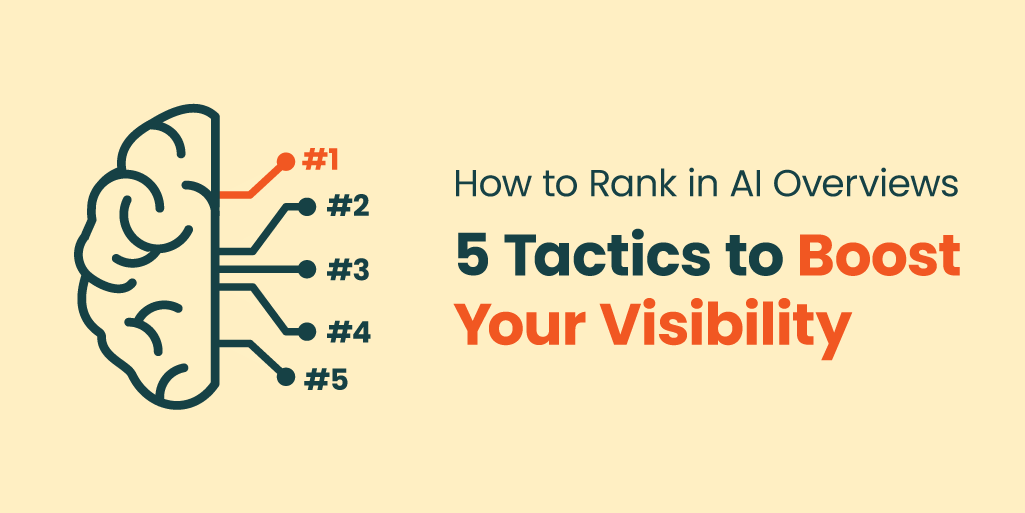Your click-through rates are down. Your content isn’t converting like it used to. Buyers are forming opinions about your brand without ever visiting your website. If you feel like the rules of content marketing are changing faster than you can adapt, you’re not alone.
Among the many things AI search and zero-click behavior have upended is one of the age-old questions in B2B marketing:
What content should we gate?
While that’s always been a nuanced question, the answer has become more complex. Content that even seems like something that AI can replicate won’t convert. That’s why the key to winning the gating game in the zero-click era is in knowing which content is “AI-proof” enough to justify a form and which content is better left ungated to fuel visibility.
Why Most Gated Content Stays Invisible
B2B buyers are increasingly influenced by what they see in channels you don’t directly control, like ChatGPT and Google AI Overviews. Once their shortlist is built, it’s not easy to break in: 92% of B2B buyers start with at least one vendor in mind, and 41% already have a single preferred vendor selected before formally evaluating options.
That makes visibility critical. But zero-click behavior is making it harder to break through:
- 91% of B2B buyers now use AI in their purchase process
- 69% of Google searches end without a click — up from 56% in 2024
- Click-through rates have fallen by as much as 35%
To gain visibility and appear in those ever-important AI search results, you need ungated, GEO-optimized content that builds your presence in the channels where buyers are researching. But you still need to generate leads and capture intent, which requires a more strategic approach to what content you keep behind a gate.
The 3 Criteria for Gating
What makes an asset a worthy candidate for gating? Content that clears at least two of these three bars:
- Actionable: Personalized recommendations or hands‑on utility
- Decision-enabling: Economic reports that help buyers prove ROI or build an internal business case
- Time-saving: Ready-to-use resources that save buyers time they’d otherwise spend researching or planning
Those assets earn the gate and often reveal buyer intent signals you can’t get any other way, like what problems they’re solving and where they are in their buying journey.
Your assets that don’t meet these criteria should be left ungated to maximize your reach and AI visibility. Here’s how that breaks down by content type.
What Content Should You Gate in the AI Era?
Usually Gate
- Interactive tools & assessments: Practical tools like calculators or self-assessments can provide buyers with personalized recommendations while giving you strong intent signals on where they are in their journey and what their pain points are. Plus, interactive formats can convert as high as 30-50%!
- Proprietary research & benchmarks: Original data provides clear value and often signals intent. When someone downloads your “API Response Time Benchmarks for Enterprise Software Report,” they’re evaluating performance requirements and potentially in active vendor comparison.
- Implementation frameworks & playbooks: Frameworks built from your experience with real implementations offer immediate utility and can save buyers weeks of trying to figure it out themselves. Downloading this type of asset signals they’re moving from research to execution.
Gate Conditionally
- Live events or workshops: Webinar attendance increased by 7% year-over-year, indicating that buyers are still willing to commit time when the content delivers. Registration should be gated, but you can ungate the on-demand recording later if your goals shift from lead capture to maximizing reach.
- Deep‑dive guides: Gate only if they contain unique perspectives, exclusive data, or your specific methodology that can’t be easily replicated by AI. A broad primer won’t clear the bar; ungate it to extract as much SEO and GEO juice from it as possible.
Don’t Gate
- Case studies & thought leadership: These are trust builders that need to circulate freely through buying committees and appear in AI search results. Your case study proving real-world results or your CEO’s provocative take on the latest industry trends builds the authority that makes your gated content work.
- Product information: Pricing guides, feature comparisons, and product one-pagers are evaluation enablers. If someone can’t even see your pricing or understand your capabilities, they’ll move on to a competitor who makes it easier.
- Educational content: Blog posts and high-level how-to guides should be part of your visibility play for the prospects who aren’t ready to buy yet. Let AI cite those, and let buyers discover them through search.
Use the Gate to Build a Smarter Content Ecosystem
An effective content strategy considers how buyers move through their journey — what they need early, what they’ll seek out later, and what they’ll be willing to exchange their information for. Staying present throughout that journey requires seamless pathways that lead buyers from ungated to gated content:
- POV article → assessment: A “Why Most B2B Leads Are Garbage” blog post leads to a Lead Quality Assessment that evaluates scoring models and recommends next steps.
- Case study → template: A success story introduces a method and leads to a downloadable implementation checklist for teams ready to try it.
- Pricing page → calculator: A pricing page leads to an ROI model tailored to buyer inputs.
When done right, gating content enables you to deliver tailored nurture email campaigns to stay top of mind while guiding prospects down the funnel. That downstream engagement is often where trust is reinforced and deals are won.
Speed Up the Journey From Awareness to Pipeline
In a world where AI mediates buyer research and shortlists are more exclusive, building your brand awareness through GEO-optimized ungated content is how you get discovered and build the trust that makes forms worth filling out.
Gating the assets that drive decisions, save time, and can’t be produced by AI turns that awareness into pipeline.
At Firebrand, we help B2B tech brands build content strategies that drive revenue, not just traffic. Our full-funnel approach ensures every piece of content, gated or ungated, is a powerful component of your growth engine.
About the Author
Andres is a content marketing pro who helps B2B tech brands drive growth through creative campaigns. At Firebrand, Andres is focused on content creation, strategy, messaging, and performance analysis.
Before joining Firebrand, Andres led content marketing, copywriting, and PR efforts for various B2B brands throughout the Americas. Connect with Andres here.





